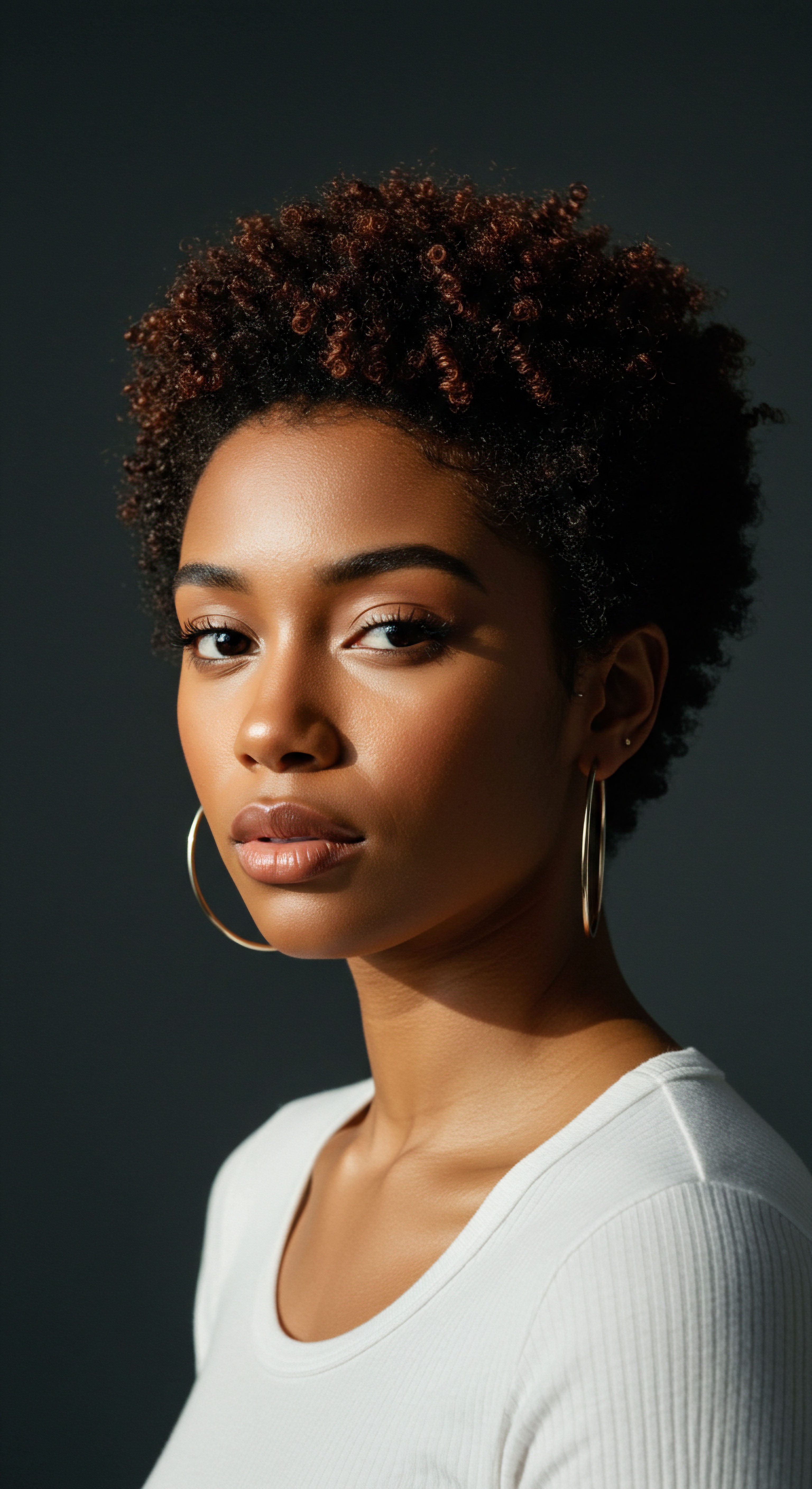
Roots
Consider the quiet moments of repose, when the day’s demands recede, and the body seeks its restorative rhythm. Within this gentle unfolding, our hair, particularly textured strands, often contends with an unseen adversary ❉ the subtle, persistent drag of fabric against its delicate structure. This interaction, seemingly innocuous, holds the potential for microscopic abrasion, a gradual wearing that can diminish the vitality we so carefully cultivate. To truly comprehend whether a bonnet offers a shield against this silent attrition, we must first journey into the very architecture of hair itself, understanding its inherent design and the forces that seek to disrupt its peaceful existence.
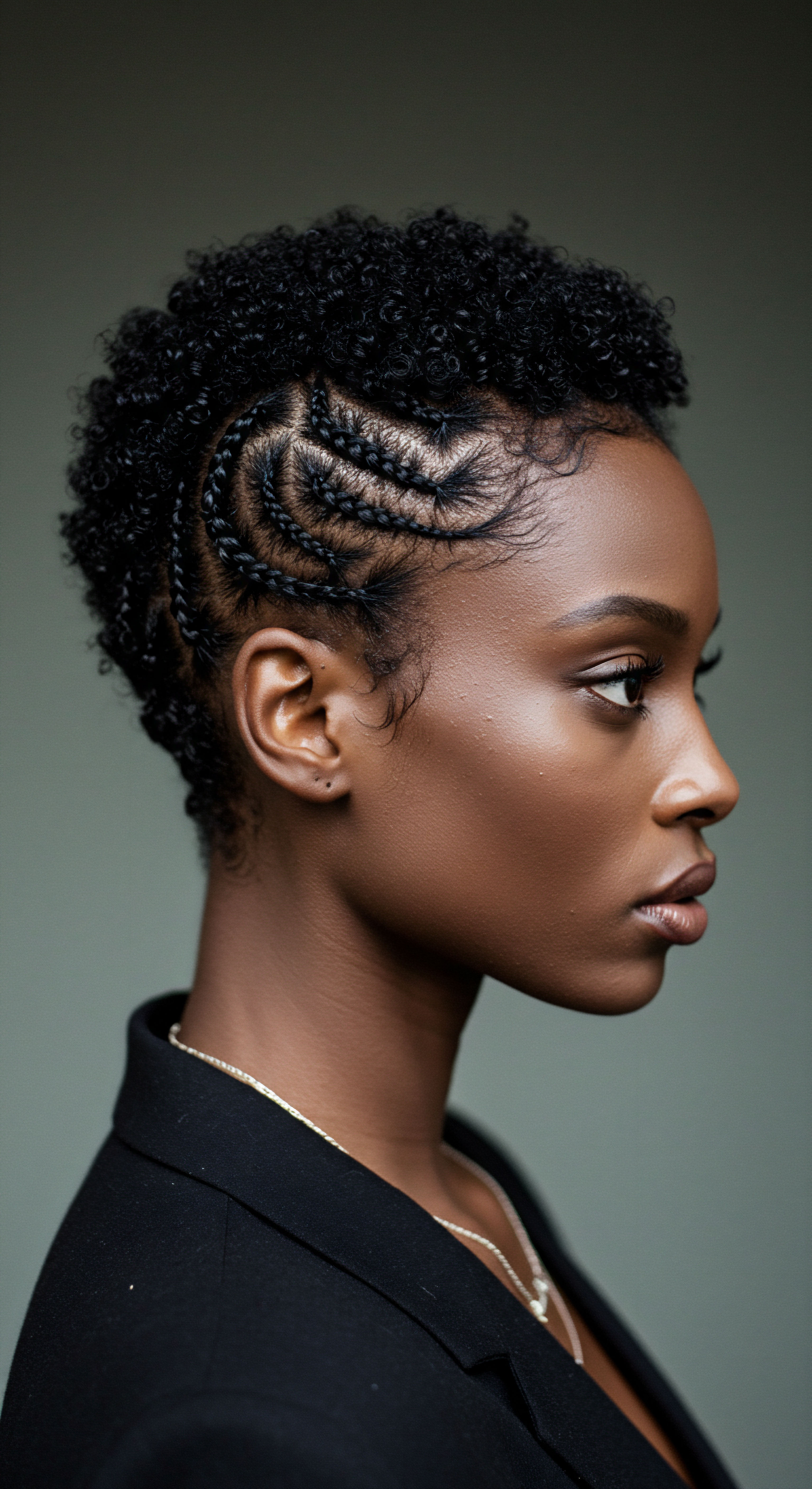
Hair Anatomy and Physiology Specific to Textured Hair
The human hair strand, a marvel of biological engineering, possesses a layered complexity that belies its slender form. At its core lies the Medulla, a soft, sometimes discontinuous central canal. Surrounding this is the Cortex, the primary bulk of the hair, composed of keratin proteins arranged in long, helical chains. It is within the cortex that hair derives its strength, elasticity, and pigment.
The outermost layer, the hair’s first line of defense, is the Cuticle. This protective sheath consists of overlapping, scale-like cells, much like shingles on a roof, all pointing towards the hair’s tip.
For textured hair, this intricate structure presents unique considerations. Unlike straight hair, which tends to have a circular cross-section, textured strands often possess an elliptical or even flattened shape. This structural variation creates points of curvature and torsion along the hair shaft.
At these natural bends and coils, the cuticle scales may lift more readily or be less uniformly aligned, rendering these areas particularly susceptible to external stressors. The very beauty of a curl or coil also introduces inherent vulnerabilities, as the hair bends upon itself, creating additional points of contact and potential friction.
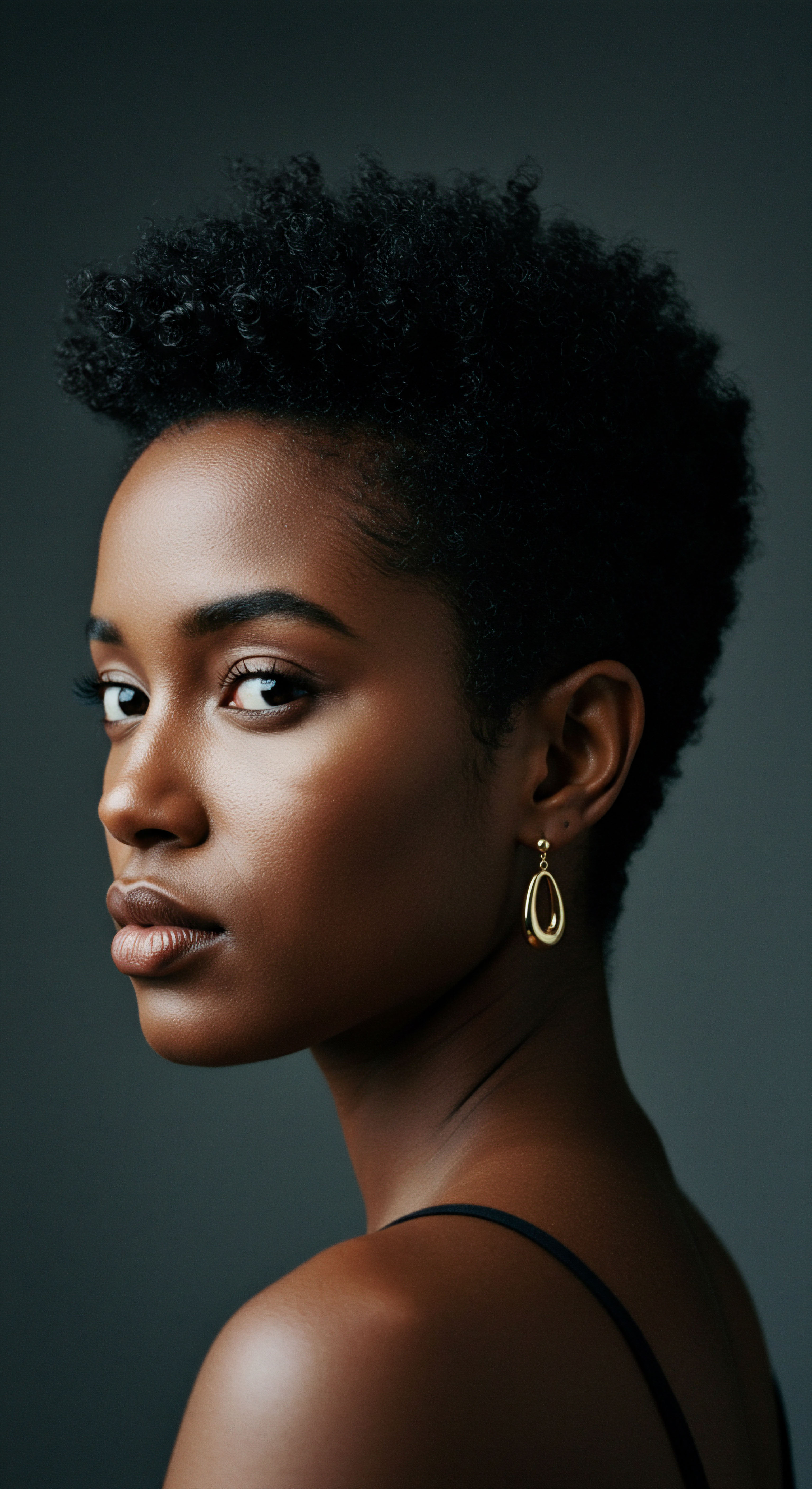
The Role of the Cuticle
The cuticle’s integrity is paramount to hair health. When these scales lie flat and smooth, they reflect light, giving hair its natural sheen. More critically, they act as a formidable barrier, guarding the inner cortex from moisture loss and external aggressors.
This protective function is vital for all hair types, yet for textured hair, which is often predisposed to dryness due to its structural characteristics and slower sebum distribution along the coil, maintaining cuticle smoothness becomes an even more pressing concern. A compromised cuticle allows precious moisture to escape, leaving the hair dry, brittle, and prone to breakage.
The hair cuticle, an overlapping layer of protective scales, stands as the primary guardian against moisture loss and external stressors for every strand.
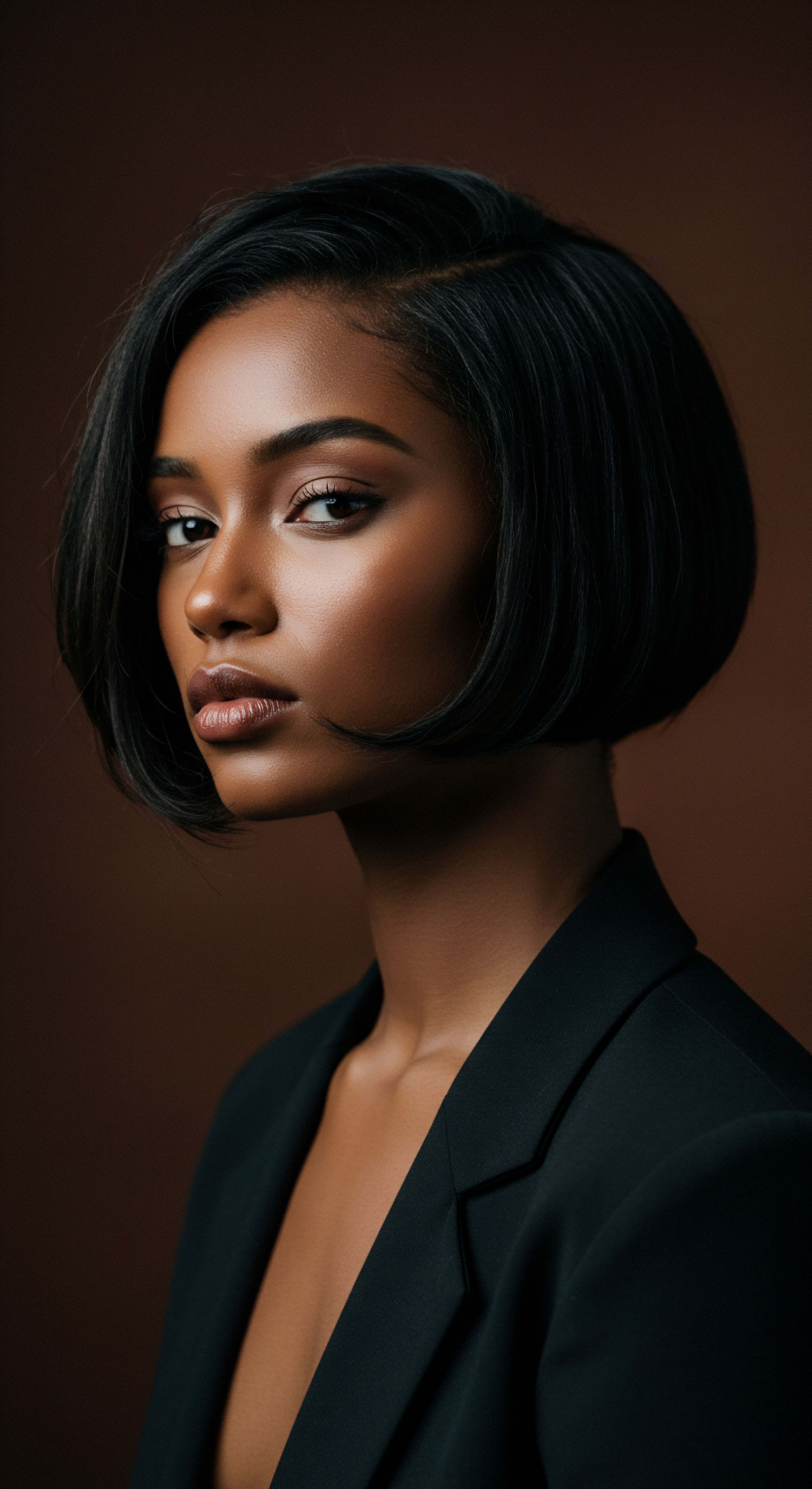
The Physics of Friction
Friction, at its heart, is the resistance that one surface encounters when moving over another. In the context of hair, this mechanical interaction can be categorized into two main types ❉ static friction, which resists the initial movement, and kinetic friction, which acts against continued motion. During sleep, as we shift and turn, our hair constantly rubs against the pillowcase.
This repeated contact generates friction, a force that can abrade the delicate cuticle scales. The rougher the surface of the pillowcase, the greater the friction, and consequently, the more pronounced the potential for mechanical damage.
Consider the subtle, yet relentless, drag. Each micro-movement against a coarse fabric, such as cotton, can cause the raised cuticle scales to snag, chip, or even break away. Over time, this cumulative damage weakens the hair shaft, leading to increased porosity, tangling, frizz, and ultimately, breakage. The very act of seeking rest can, paradoxically, become a source of stress for our hair, making the choice of sleep surface a quiet, yet significant, act of care.

Ritual
With a foundational understanding of hair’s delicate structure and the unseen forces at play during our slumber, we turn our attention to the deliberate practices that offer protection. The bonnet, a seemingly simple garment, holds a place of honor in the nighttime regimens of many with textured hair. Its purpose transcends mere aesthetics; it is a shield, a cocoon designed to safeguard strands from the relentless friction of the pillow. This section explores the practical wisdom embodied by the bonnet, examining how it functions as a protective measure and considering the various materials that contribute to its efficacy.

The Bonnet’s Purpose
A bonnet, at its most fundamental, serves as a protective barrier between hair and sleep surfaces. Its primary function is to minimize the mechanical friction that occurs when hair rubs against pillowcases. By encasing the hair, a bonnet creates a smooth, contained environment, allowing strands to glide against one another or against the bonnet’s soft lining, rather than against the potentially abrasive texture of cotton bedding. This reduction in friction is crucial for preserving the hair’s outermost layer, the cuticle, which, as discussed, is highly susceptible to damage from mechanical stress.
Beyond friction reduction, bonnets also play a role in maintaining hair’s moisture balance. Hair, particularly textured hair, is prone to losing moisture to absorbent fabrics like cotton, which can wick away natural oils and applied products. A bonnet, especially one crafted from non-absorbent materials, helps to keep this vital moisture within the hair shaft, contributing to softer, more supple strands upon waking. This dual action—protecting against physical abrasion and preserving hydration—positions the bonnet as a cornerstone of effective nighttime hair care.

Material Matters
The effectiveness of a bonnet hinges significantly on the material from which it is fashioned. Not all fabrics are created equal when it comes to hair protection.
- Silk ❉ Renowned for its exceptionally smooth surface, silk possesses a low coefficient of friction. This means hair glides effortlessly over its fibers, dramatically reducing snagging and breakage. Silk is also a natural protein fiber, which, unlike cotton, does not readily absorb moisture from the hair, helping to maintain hydration levels.
- Satin ❉ Often confused with silk, satin is a weave, not a fiber. Satin can be made from various materials, including polyester or nylon, and is designed to mimic silk’s smooth, glossy surface. While not as breathable or naturally hydrating as silk, high-quality satin offers a significant reduction in friction compared to cotton and is a more accessible alternative.
- Cotton ❉ While comfortable for bedding, cotton’s absorbent nature and fibrous texture can be detrimental to hair. Its microscopic loops and threads can snag on the cuticle scales, leading to friction, tangling, and moisture loss.
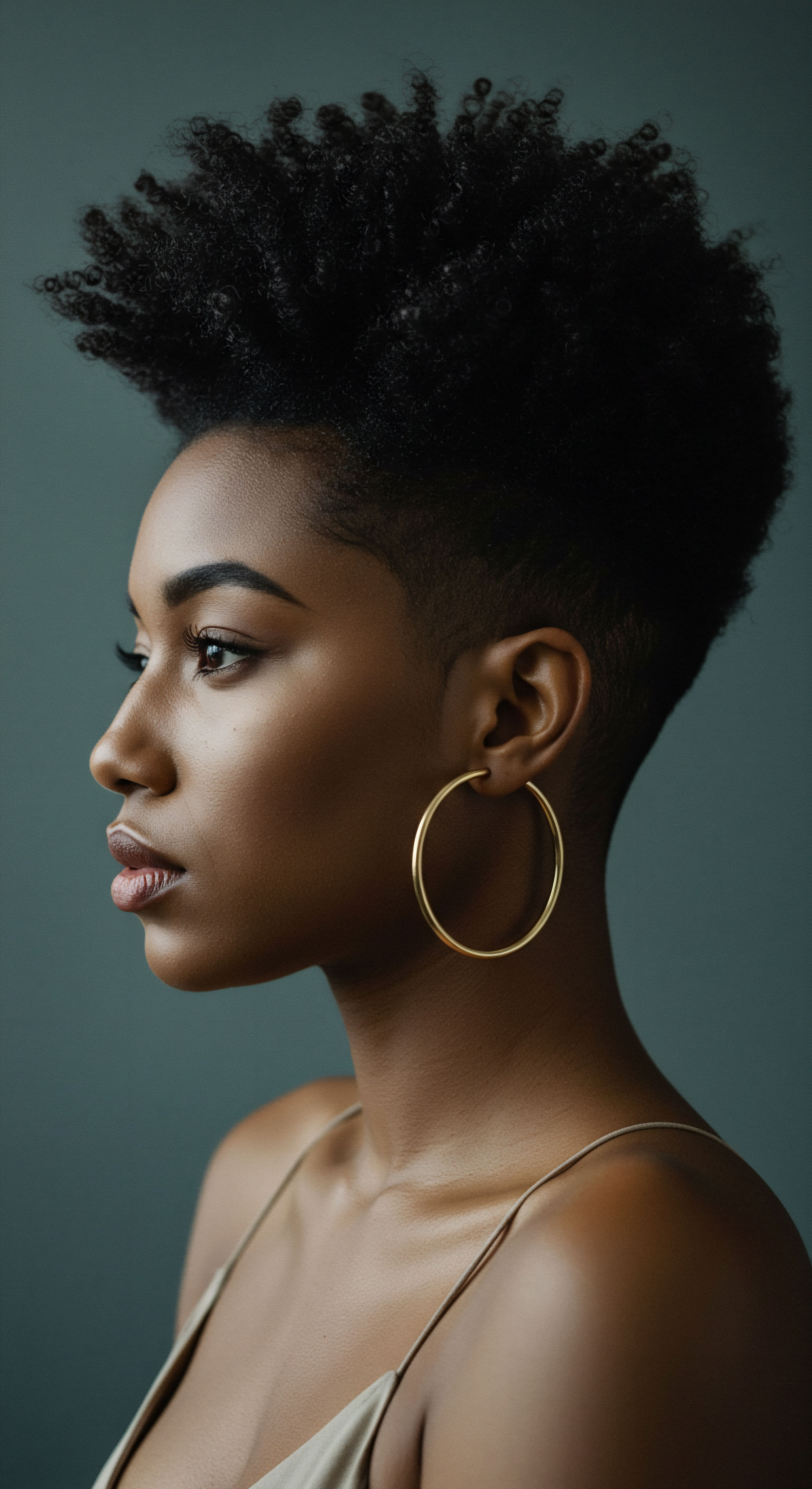
Proper Bonnet Application
The manner in which a bonnet is worn can also influence its protective capabilities.
- Gather Hair Gently ❉ Before donning the bonnet, loosely gather hair, perhaps into a pineapple (a high, loose ponytail at the crown) or a few large twists or braids. This prevents excessive compression and minimizes tangling within the bonnet.
- Ensure a Secure yet Comfortable Fit ❉ The bonnet should stay on throughout the night without being overly tight, which could cause tension at the hairline. An elastic band that is too constricting can lead to breakage around the edges.
- Consider Hair Length and Volume ❉ For very long or voluminous hair, a larger bonnet or even a specialized “slap cap” might be more appropriate to accommodate all strands without crushing them.
The choice of bonnet material, with silk and satin standing out for their low friction properties, significantly impacts its ability to shield hair from nocturnal wear.

Beyond the Bonnet Other Nighttime Protective Measures
While bonnets are a powerful tool, they are often part of a broader nighttime ritual for textured hair care. Other complementary practices further bolster protection:
- Pineapple Method ❉ This involves gathering hair loosely on top of the head, allowing curls to remain uncrushed and preserving their shape. This method reduces contact with the pillow.
- Loose Braids or Twists ❉ Securing hair in a few large, loose braids or twists before bed can prevent tangling and minimize friction, particularly for longer strands. This also helps to stretch curls slightly, which can be beneficial for styling the following day.
- Silk or Satin Pillowcases ❉ For those who prefer not to wear a bonnet, or as an added layer of protection, a silk or satin pillowcase provides a low-friction surface directly on the bed. This can be particularly beneficial for children or those who find bonnets uncomfortable.
Each of these methods, when applied with intention, contributes to a holistic approach to nighttime hair preservation, allowing the hair to rest as serenely as the individual.
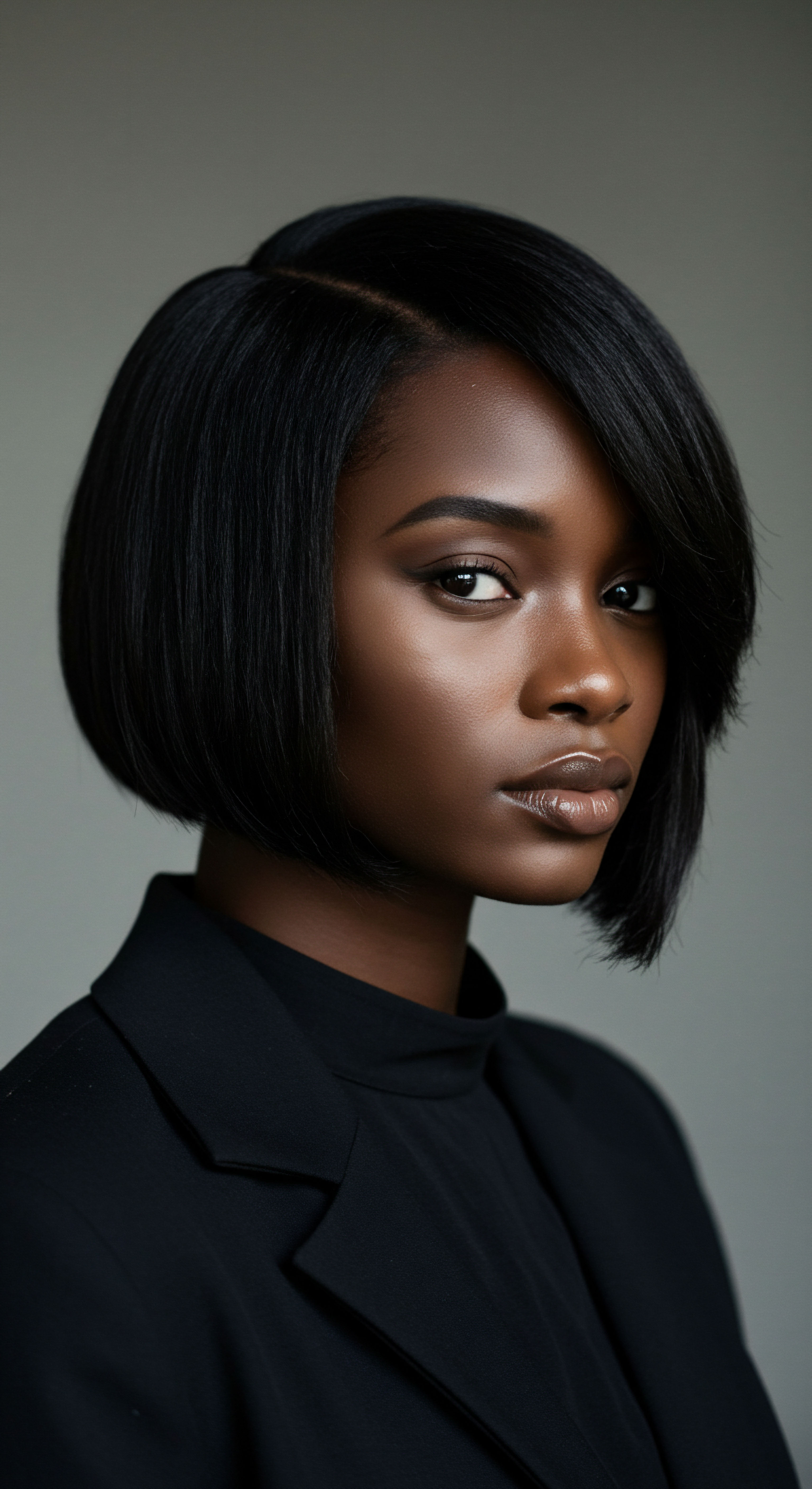
Relay
Having explored the fundamental mechanics of hair friction and the practical application of bonnets, we now venture into a deeper stratum of understanding. Can the act of donning a bonnet truly extend beyond simple damage reduction, touching upon the very long-term vitality of our hair and its cultural resonance? This exploration demands a more precise lens, one that considers the intricate interplay of scientific data, the subtle micro-environments created by protective coverings, and the profound historical threads that bind hair practices to identity.
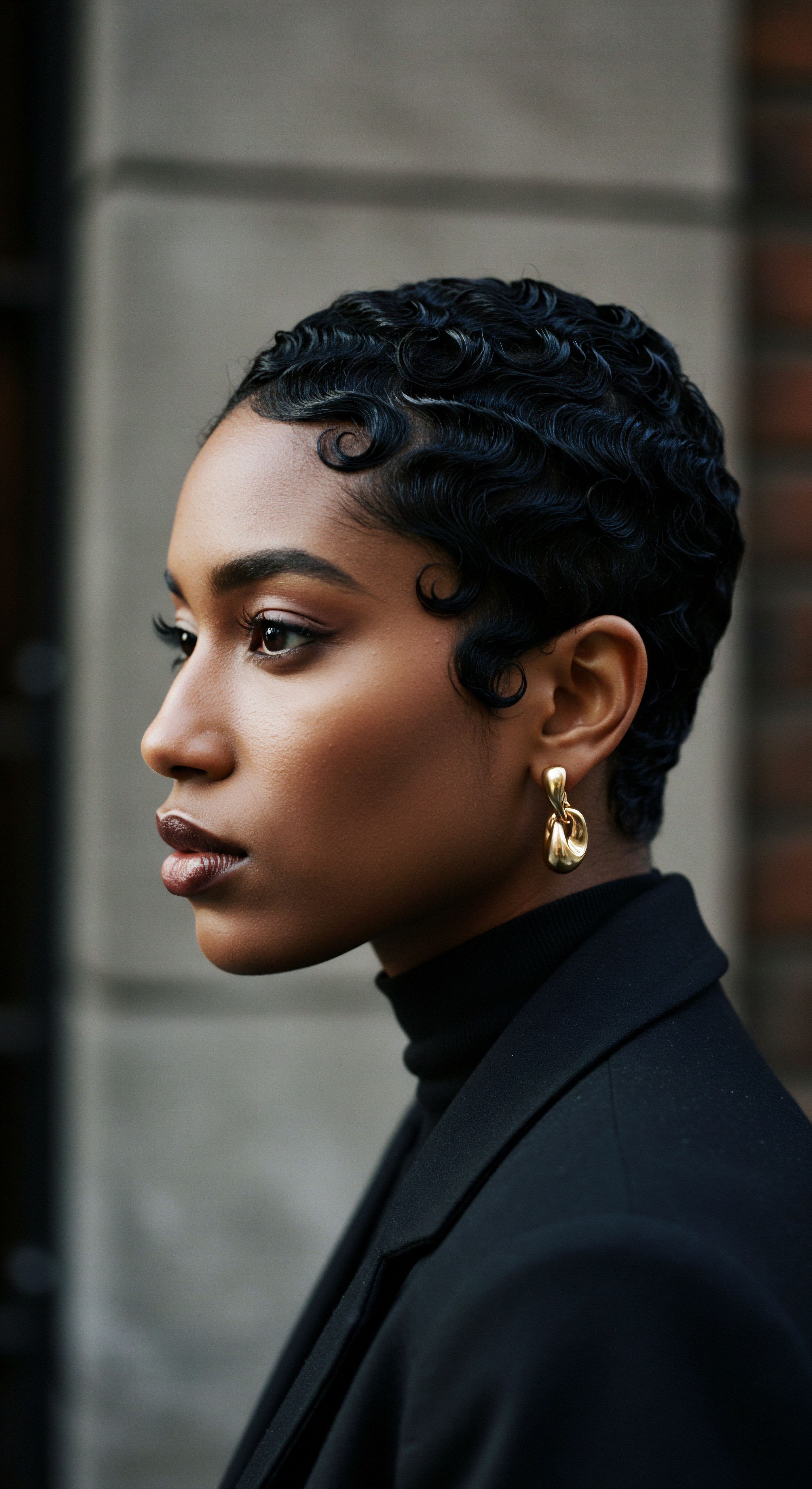
Historical and Cultural Significance of Head Coverings
The practice of covering hair, particularly during sleep, holds a rich and layered history across numerous cultures, especially within Black communities. This tradition predates modern hair science, stemming from a blend of practical necessity, cultural expression, and spiritual significance. Head coverings were often used to maintain cleanliness, protect intricate hairstyles, and signify social status or religious adherence. The evolution of the bonnet, as a specific nighttime hair covering, is a testament to this enduring legacy, adapting ancient wisdom to contemporary needs.
This long-standing practice speaks to an intuitive understanding of hair’s vulnerability. Before scientific instruments could measure cuticle lift or friction coefficients, generations observed that hair protected at night retained its luster and manageability more readily. This cultural continuity underscores a deep-seated respect for hair as a living extension of self, worthy of diligent preservation. The bonnet, then, is not merely a product; it is a continuation of a heritage of care, a tangible link to ancestral knowledge regarding hair wellness.
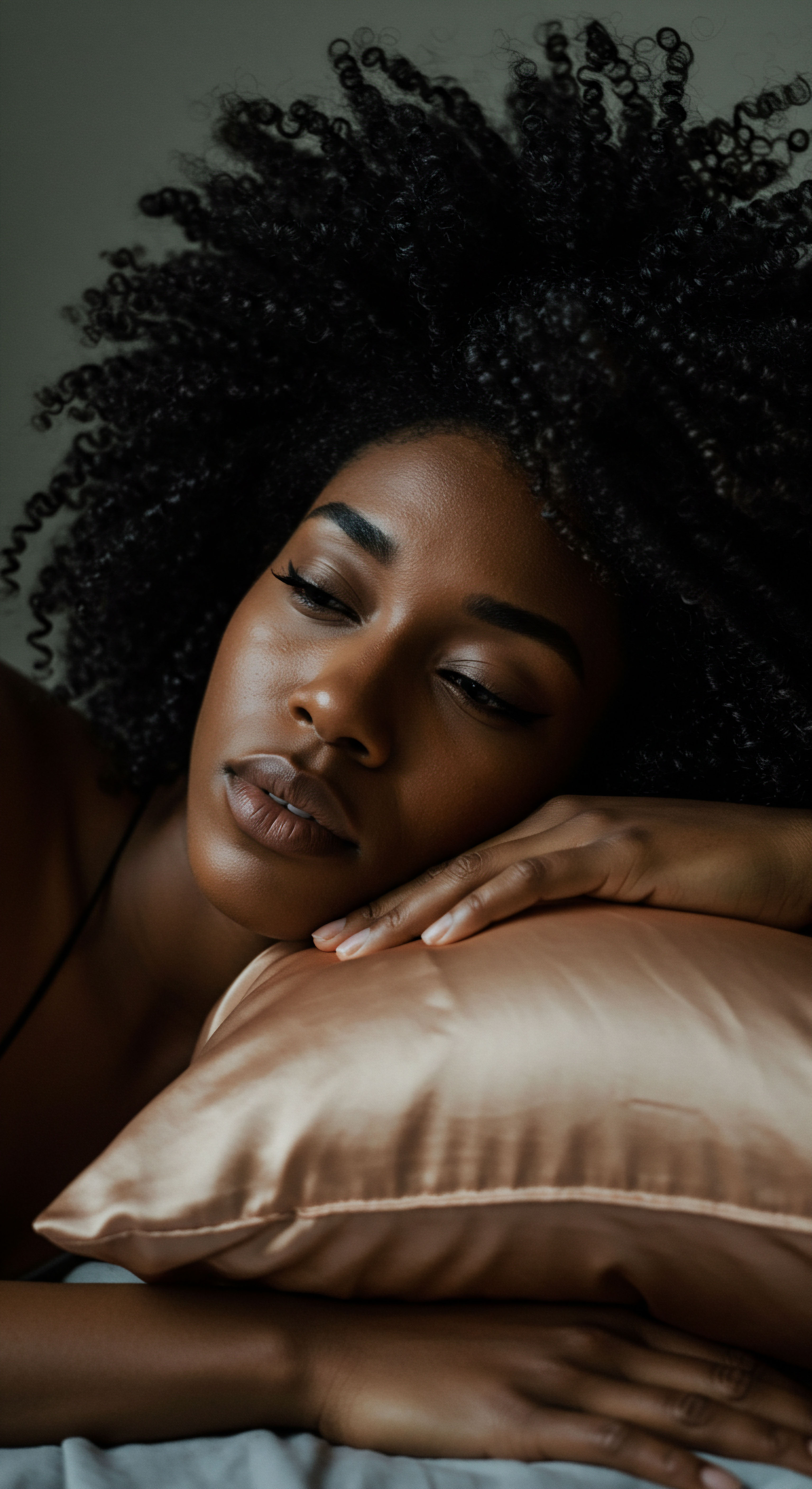
The Micro-Environment of the Bonnet
A bonnet creates a unique micro-environment around the hair. This enclosed space can influence several factors crucial for hair health:
- Humidity Retention ❉ By trapping the natural moisture evaporating from the scalp and hair, a bonnet can maintain a higher humidity level around the strands. This is particularly beneficial for textured hair, which thrives in moisture. A humid environment can help keep the hair supple and less prone to brittleness, reducing the likelihood of breakage even if some minimal friction occurs.
- Product Absorption ❉ The contained environment can also enhance the absorption of overnight treatments, oils, and leave-in conditioners. Products applied before bed are less likely to transfer to bedding and more likely to penetrate the hair shaft, maximizing their benefits.
- Temperature Regulation ❉ While generally a benefit, some materials might lead to excessive warmth. However, for most, the consistent temperature helps prevent rapid moisture evaporation, which can otherwise occur in drier ambient air.

Long-Term Hair Health Implications
The cumulative effect of nightly friction, even if seemingly minor each morning, can significantly impact hair health over time. Constant abrasion leads to progressive cuticle damage, exposing the cortex and weakening the hair shaft. This can manifest as chronic dryness, increased porosity, split ends, and ultimately, a noticeable reduction in length retention due to breakage.
Conversely, consistent use of a bonnet or similar protective measure can lead to profound improvements. By mitigating daily damage, hair is given the opportunity to grow longer and stronger. The preservation of cuticle integrity means better moisture retention, leading to improved elasticity and a healthier appearance. This is not a quick fix, but a sustained commitment to preventative care that yields long-term dividends.
Sustained protection from sleep-induced friction significantly reduces cumulative hair damage, fostering long-term vitality and length retention.
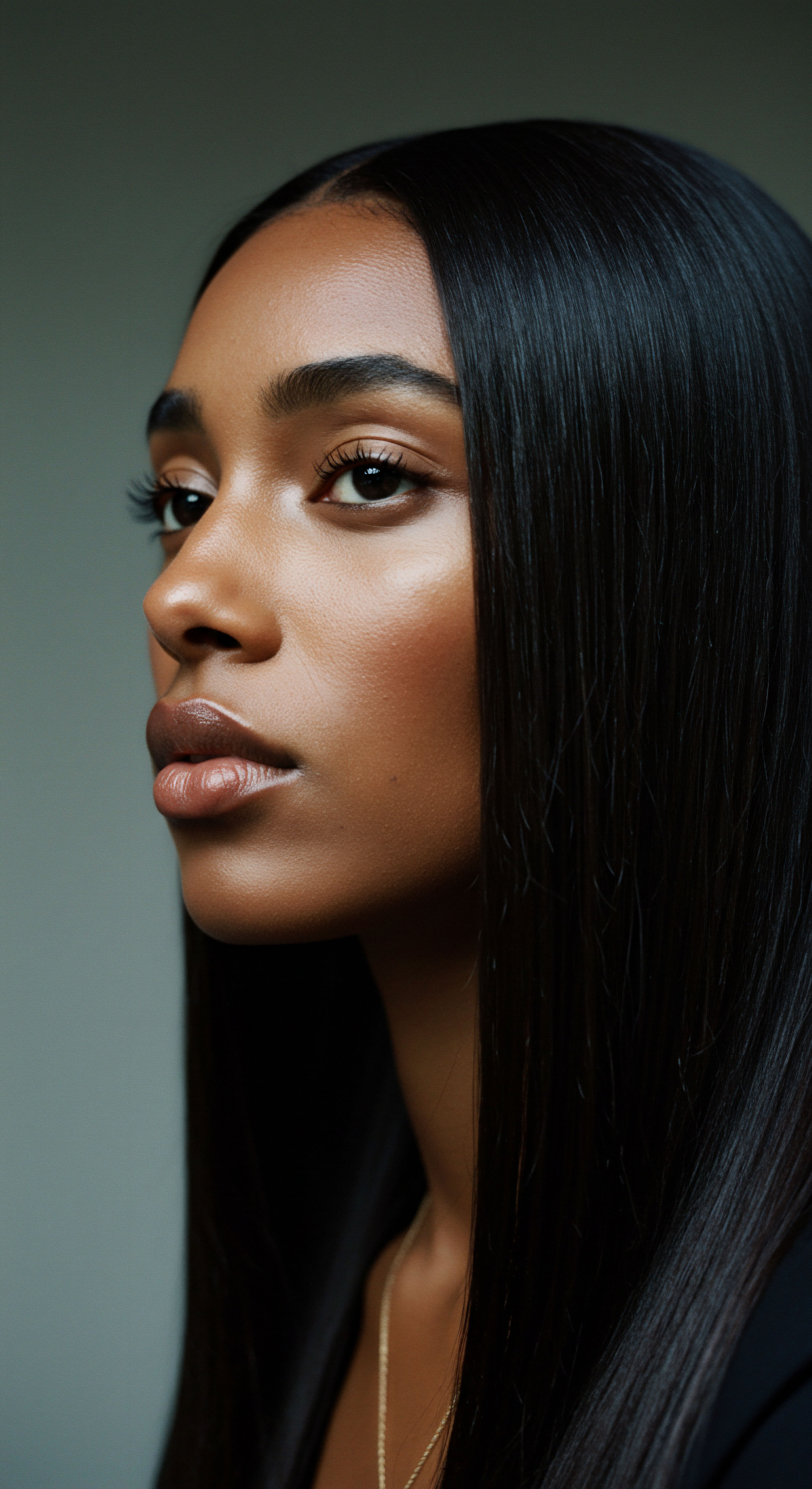
Examining the Science of Friction Reduction
The scientific community has, for some time, recognized the impact of textile surfaces on hair integrity. A study published in the Journal of Cosmetic Science by R.R. Bhushan and C.J. Smith, titled “Friction and wear of human hair,” (2002) offers a compelling data point.
Their research investigated the tribological properties of human hair against various surfaces. While not specifically testing bonnets, the principles apply directly. The study found that the Coefficient of Friction for human hair against a smooth, low-energy surface (akin to silk or satin) is significantly lower than against a high-energy, fibrous surface (like cotton). For instance, their findings indicated that the friction coefficient of hair against a smooth polymer surface could be as low as 0.1-0.2, whereas against a more abrasive textile, it could be several times higher.
This quantifiable difference in friction directly translates to reduced mechanical stress on the hair cuticle. When hair experiences less resistance, there is less opportunity for the cuticle scales to lift, chip, or abrade, thereby preserving the hair’s protective outer layer and preventing the cascade of damage that leads to dryness, frizz, and breakage. This empirical evidence underpins the efficacy of smooth-surfaced bonnets in mitigating sleep-induced hair damage.
| Material Silk |
| Key Characteristic Smooth, low friction, protein fiber |
| Impact on Hair Significantly reduces friction, preserves moisture, minimizes tangles. |
| Material Satin (Polyester/Nylon) |
| Key Characteristic Smooth weave, mimics silk's glide |
| Impact on Hair Reduces friction, less absorbent than cotton, a good alternative to silk. |
| Material Cotton |
| Key Characteristic Fibrous, absorbent texture |
| Impact on Hair High friction, wicks away moisture, increases tangling and breakage risk. |
| Material Selecting the appropriate material is central to protecting hair during sleep. |

The Psychological Aspect
Beyond the tangible benefits to hair health, the ritual of wearing a bonnet can hold a significant psychological dimension. It represents an act of self-care, a deliberate choice to prioritize one’s well-being, even in the quiet hours of night. This consistent attention to hair can foster a deeper connection to one’s natural texture and identity. For many, textured hair is not merely strands on a head; it is a profound expression of heritage, beauty, and resilience.
The bonnet, then, becomes a symbol of honoring that connection, a quiet affirmation of self-worth and a commitment to nurturing one’s unique beauty. This ritualistic aspect contributes to an overall sense of hair wellness that extends beyond the physical, touching upon mental and emotional well-being.

Reflection
The quiet revolution of the bonnet, once perhaps seen as a simple accessory, stands revealed as a profound testament to informed care. Our exploration has traversed the delicate architecture of the hair strand, understood the subtle yet relentless forces of friction, and recognized the enduring wisdom embedded in cultural practices. The scientific data, confirming the superior glide of smooth fabrics, lends empirical weight to what generations intuitively understood.
To don a bonnet is not merely to cover one’s hair; it is to engage in a deliberate act of preservation, a nightly reaffirmation of hair’s inherent beauty and vulnerability. This practice, woven into the fabric of daily ritual, contributes to a holistic vision of hair health, where knowledge and intention converge to nurture the strands we wear as crowns.

References
- Bhushan, R.R. & Smith, C.J. (2002). Friction and wear of human hair. Tribology Letters, 12(1), 35-43.
- Robbins, C. R. (2012). Chemical and Physical Behavior of Human Hair. Springer Science & Business Media.
- Dawber, R. P. R. & Van Neste, D. (2002). Hair and Scalp Disorders ❉ Common Problems and Their Management. CRC Press.
- Cruz, L. M. (2013). Textured Hair ❉ A Guide to Natural Hair Care. Self-published.
- Johnson, D. H. (2003). Hair Structure and Chemistry Simplified. Milady.
- Sakamoto, M. & Imokawa, G. (2004). Hair Science. CRC Press.
- Franbourg, A. Hallegot, P. Baltenneck, F. Freyssinet, J. M. & Bouillon, C. (2003). Current research on ethnic hair. Journal of the American Academy of Dermatology, 48(6), S115-S119.
- Feughelman, M. (1997). Mechanical Properties and Structure of Alpha-Keratin Fibres ❉ Wool, Human Hair and Related Fibres. UNSW Press.